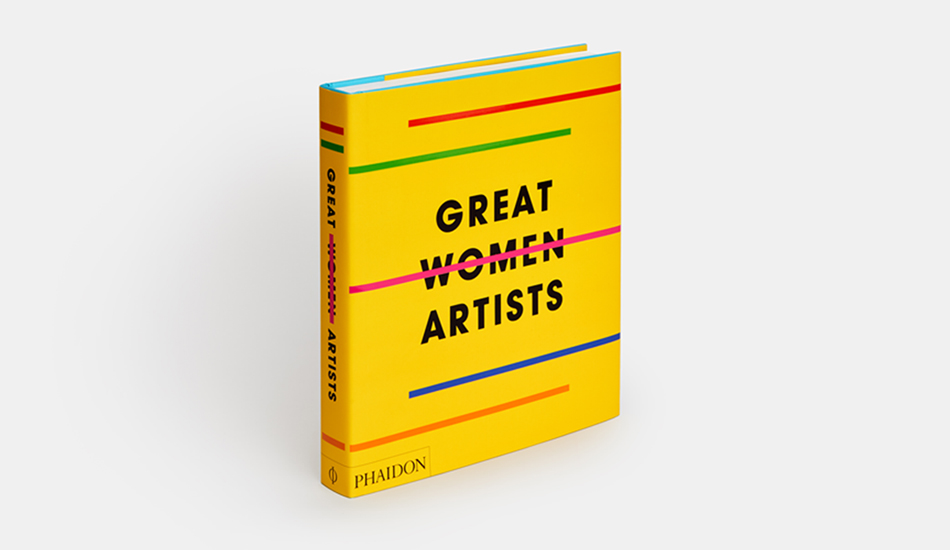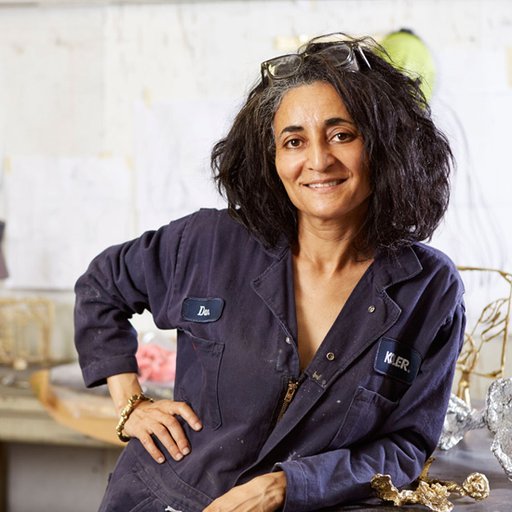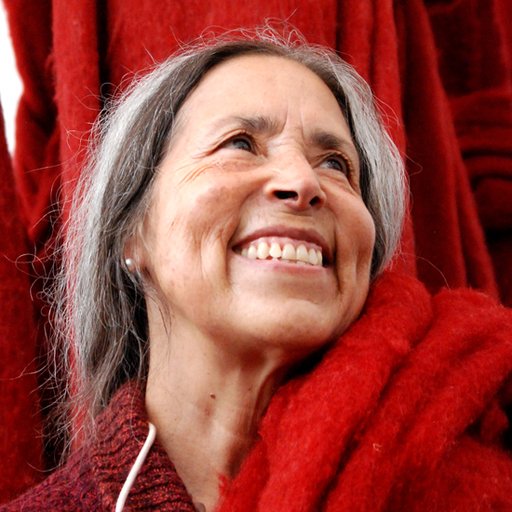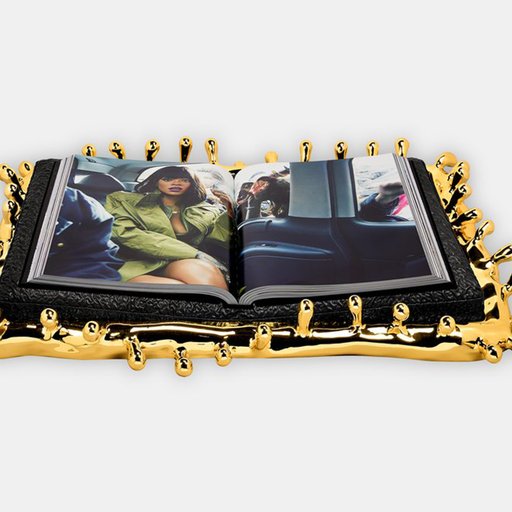A conventional standard of beauty, especially for women, hair can represent comfort and nurture as well as connoting wildness and monstrosity. The large-scale environments, of Icelandic artist Shoplifter are designed to stimulate the senses through their soft, tangible surfaces and a palette of fluorescent colours inspired by children’s books, punk-rock aesthetics and the vivid sunsets of Iceland.
As is evident in her self-given moniker – ‘Shoplifter’ – which derived from constant mispronunciation of her birth name, humour and playfulness are central to Hrafnhildur Arnardóttir’s practice.
Arnardóttir often underscores the multisensory nature of her installations by using them as settings for performances. Designing elaborate stage costumes and eccentric hairpieces, her outfits have been worn over the years by her friend and regular collaborator, the Icelandic musician, Björk.
Arnardóttir, who has her studio in Brooklyn, New York, was selected to represent Iceland at the 58th Venice Biennale in 2019 and became the instagram hit of the exhibition. Here, the artist, one of 400 featured in Phaidon's new book Great Women Artists, tells us why she's inspired by Nordic tapestries, fiber art and bold fabrics of the 70’s, why she thinks great artists should be sincere with a touch of irony and just what Louise Bourgeois, Cindy Sherman and Yayoi Kusama mean to her.
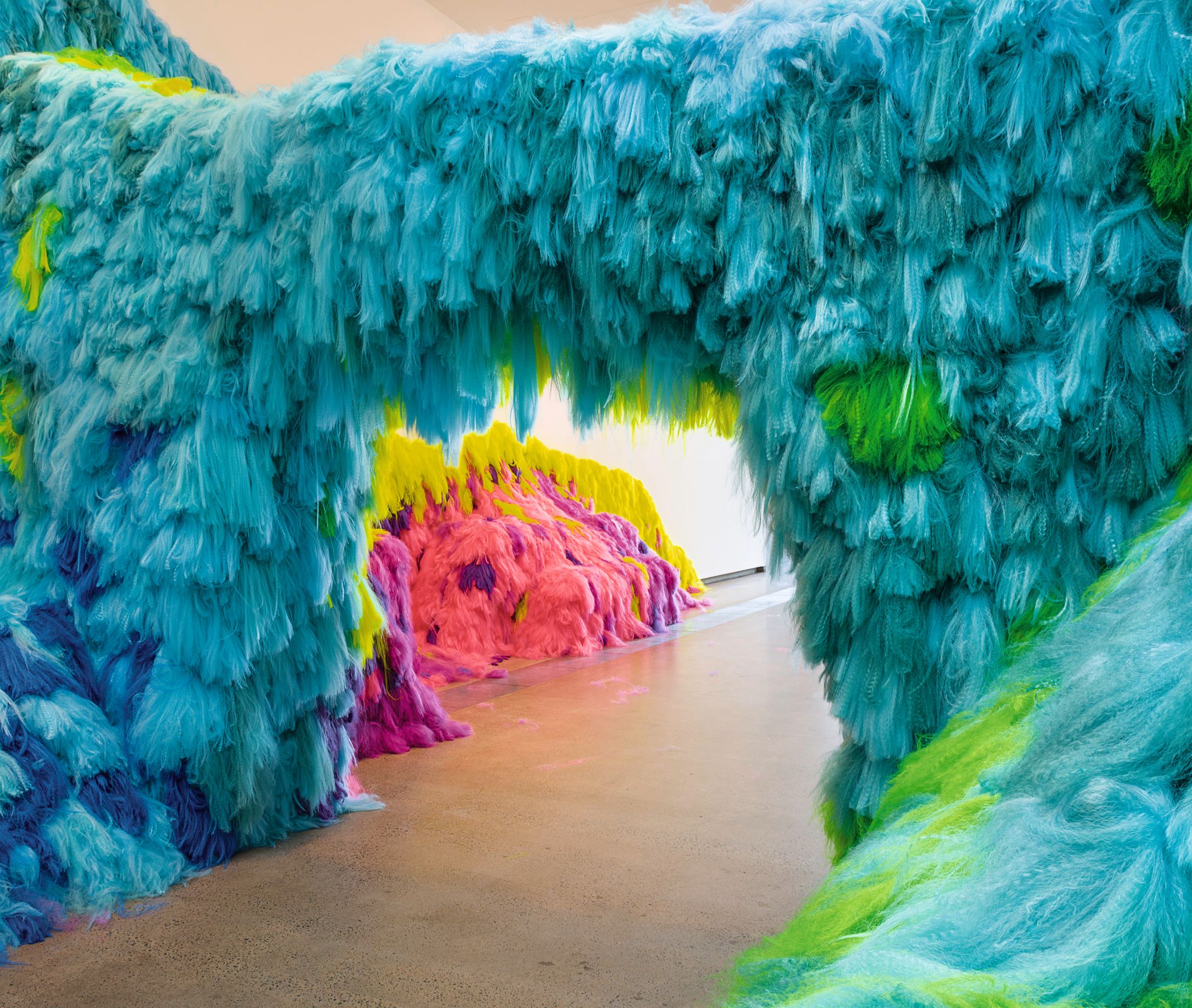
What does it mean to you to be featured in Great Women Artists?
It's very humbling, because it's beyond my wildest dreams and it’s an honor to be published alongside these phenomenal artists.
Can you describe one artwork or series from your oeuvre that you feel was pivotal in your career?
It would be the window installation I did for MoMA in 2008, made with multi colored synthetic hair braids. It was a collaboration with art collective a.v.a.f. and we created a composition of my signature braids and their abstract neon lights, the combination was fantastic. This piece was a turning point in my career not only because of the exposure and prestige of the museum, but moreover because I finally brought an explosion of colors into my work. I technically came out of the rainbow closet.
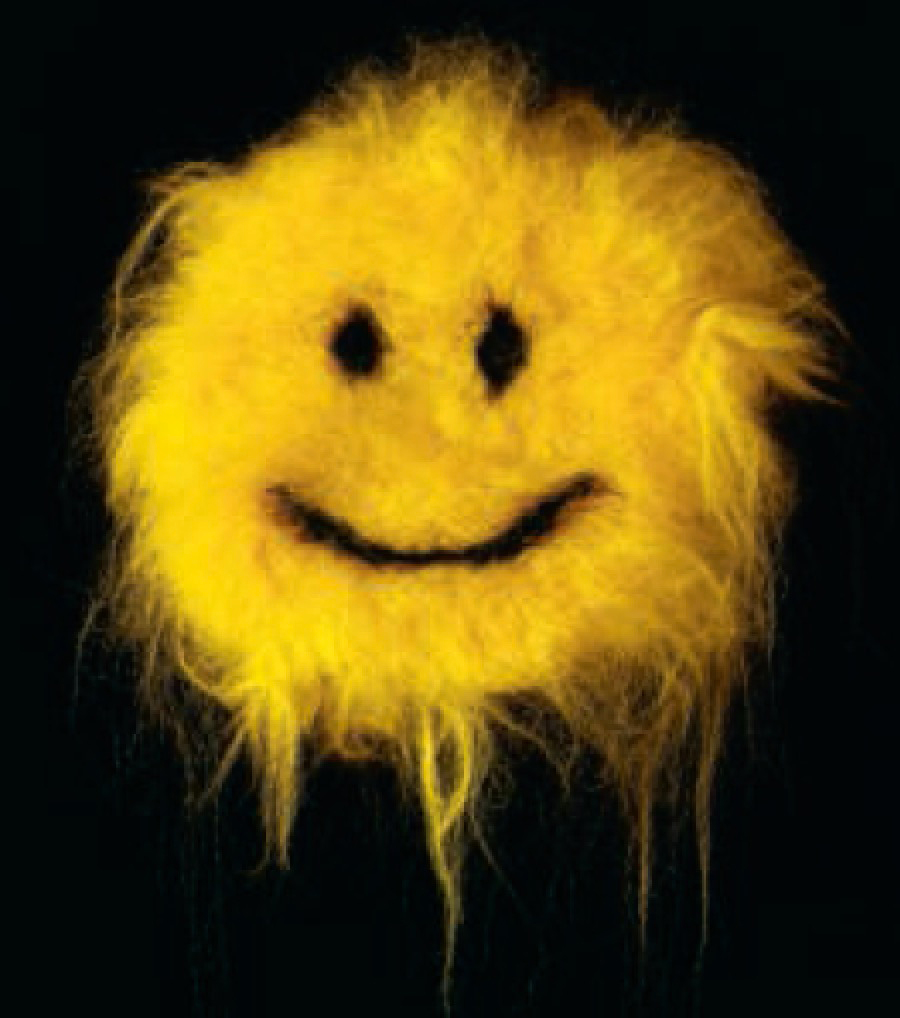
How has being a woman affected your career?
When I went to art school in Iceland in my twenties I felt like I wouldn’t be taken seriously because I liked to dress up and put on mascara and lipstick. It was as if the generation of women artists before me had just invented washing machines and put their jeans and t-shirts on eternal spin to match the concrete macho minimalism of men. I just did not identify with it, and worried that I should tone down my inspiration from pop culture and fashion.
We have a strong textile tradition in the Nordic countries and I grew up surrounded by tapestries, fiber art and bold fabrics of the 70’s. I’m drawn to textural and tangible materials, they trigger my imagination. Textiles were always considered less important than fine art, and were rather categorized as craft, but thankfully we are seeing major changes in attitudes towards fiber art in general.
What makes a great artist?
Sincerity with a dash of irony.
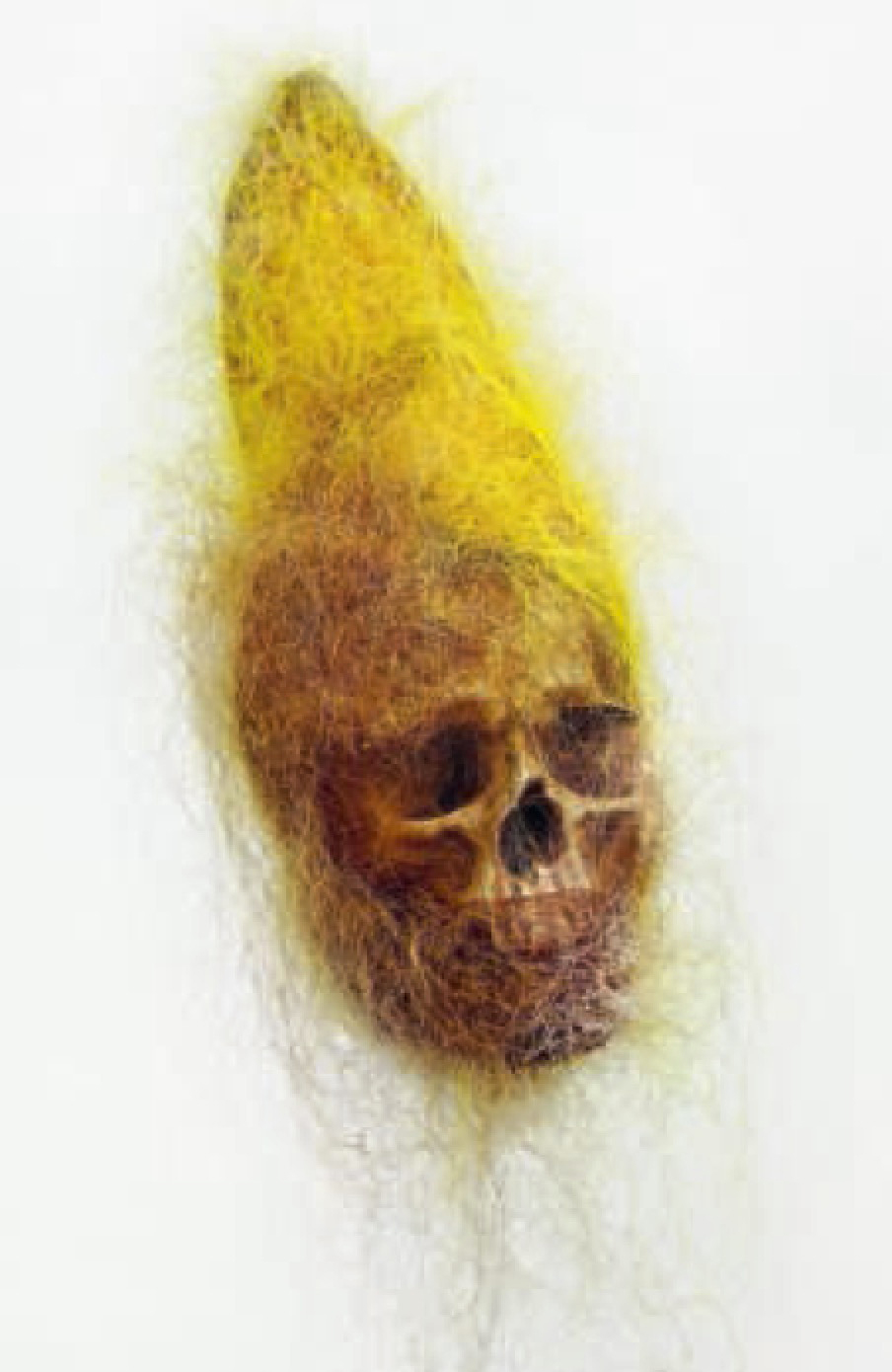
Which other great woman artists inspire you and why?
Louise Bourgeois for her diversity, stamina and sheer brilliance; Cindy Sherman for her exploration into identity, vanity and self image in her performative still photography; Yayoi Kusama for the obsessive qualities in her work and intensely embracing installations completely surrounding the viewer and creating eternal space. Margrét H. Blöndal for the sheer beauty and quirkiness of her work, the intensity of her process, peculiar and particular decision making and her meticulous methods that continue to inspire me in my own practice.
How has the art world’s relationship to women artists changed since you began your career? How could it still improve?
Women have been affected by suppression for centuries in most careers. Women artists today are more liberated in general, working in a wider variety of materials than ever before and that should be celebrated. We should continue to allow ourselves to further blur the boundaries between traditional categories of painting, sculpture, textile art, photography etc. Choosing to work within one medium is of course valid, but I believe no one should limit themselves from floating between categories if that is what inspires them.
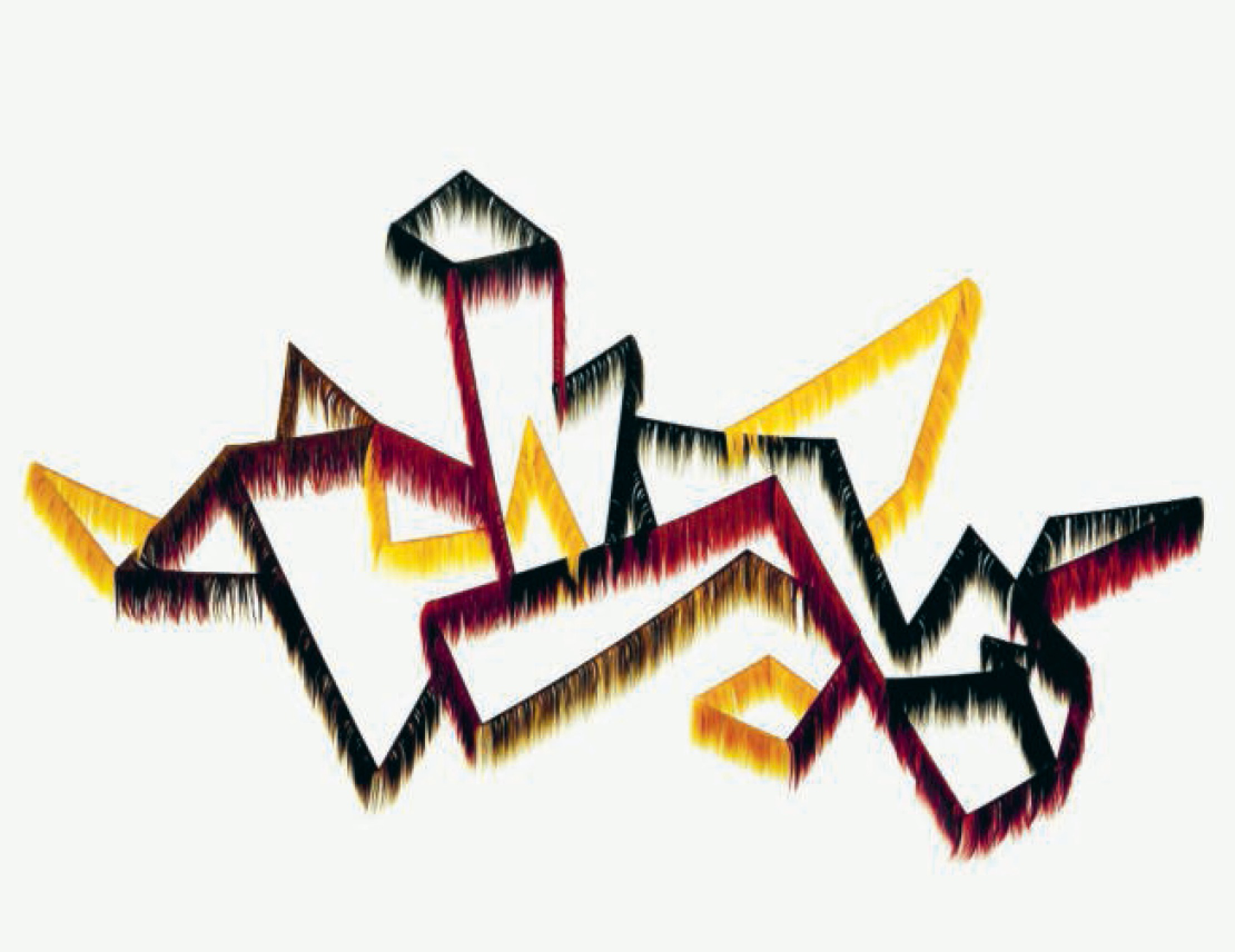
It is tragic to look at art history and see the absence of women. I’m very honored to be a part of this historical publication that eradicates the exclusion of women artists past and present. And as the title of the book implies, it’s a survey of a spectacular selection of artists that happen to be women.
What advice would you give to emerging female artists entering the art world?
Create things that make you tick and forget about over analyzing how it will be perceived by 'the artworld'. Your work will only be good if you are in alignment and true to your instincts. Figure out how to become comfortable with the uncomfortable and just do it! Then after you have created something you will find out if this is indeed what you want to communicate.












